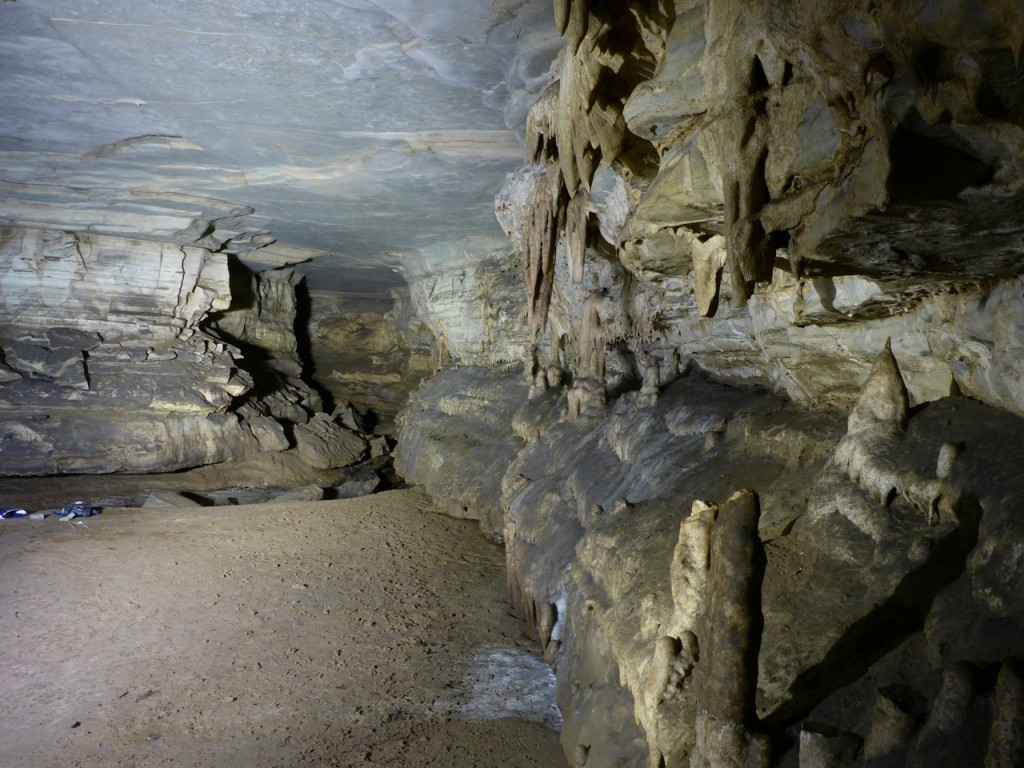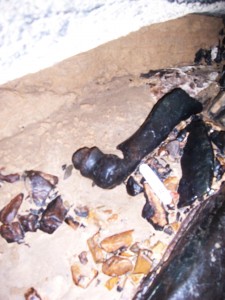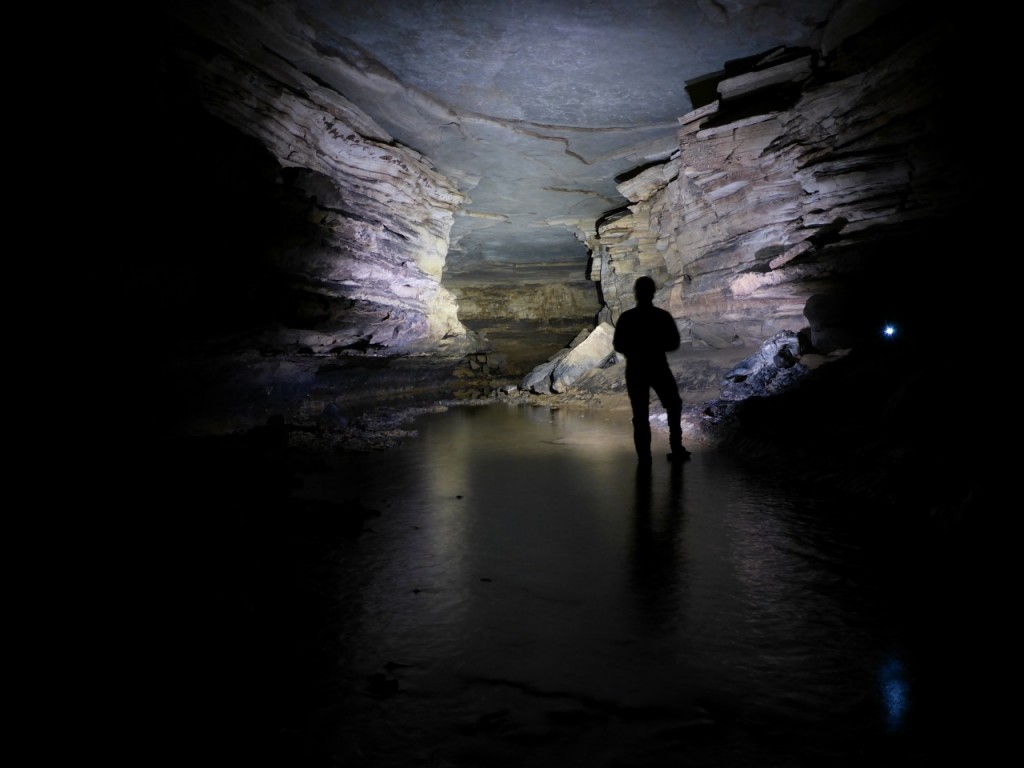Monroe County’s Extensive Cave Systems Hold Time Capsules Of Our Ice Age Past

Our Monroe County cave systens provide a window into the past, providing evidence of climate shifts, paleontology, and seismic activity. Photo courtesy Michael Bradford.
The cave systems of Monroe County and neighboring counties across the river in Missouri have yielded a treasure trove of well-preserved artifacts from long extinct mammals which roamed our Ozark plateau during the last Ice Age.
From about 1½ million years to about 10,000 years ago, glaciers of the Pleistocene Epoch – or “Ice Age” – profoundly affected Illinois. About 85% of what now is Illinois was covered by glaciers at least once. Only the extreme northwestern and extreme southern parts of the state along with Calhoun County and parts of Pike, Jersey, Monroe and Randolph counties were not glaciated, including our now wooded hill prairie corridor along the river bluffs and much of our sinkhole plain.
Over the eons, the glaciers underwent periods of expansion and contraction and in the process produced massive amounts of melt water, which helped to carve out our region’s numerous cave systems beginning about 130,000 years ago. Some caves provided superb shelters for wildlife, eking out their life spans on the inhospitable edges of massive lobes of ice.
As the climate began to warm and glaciers retreated, several species of mammals simply went extinct in our region. Science doesn’t know why the extinctions occurred, but the when is certain due to the marvels of radiocarbon dating of bones and other organic artifacts found wonderfully preserved in the stable conditions of cave environments.

Fossilized bones dated to approximately 36,000 years ago have been discovered in Monroe County caves.
All plants and animals on earth are made principally of carbon. During the period of a plant’s life, the plant is taking in carbon dioxide through photosynthesis, which is how the plant makes energy and grows. Animals eat plants, and some eat other animals in the food chain. Carbon follows this pathway through the food chain, so that all living things are using carbon until they die.
A tiny part of the carbon on the earth is called Carbon-14 (C14), or radiocarbon. It is called ‘radio’-carbon, because it is ‘radioactive’. This means that its atomic structure is not stable and there is an uneasy relationship between the particles in the nucleus of the atom itself. Eventually, a particle is emitted from the carbon 14 atom, and carbon 14 disappears.
In the 1940s, scientists succeeded in finding out how long it takes for radiocarbon to disappear, or decay, from a sample of carbon from a dead plant or animal. Willard Libby, the principal scientist, had worked on the team making the nuclear bomb during World War II. After the war he became very interested in peaceful applications of atomic science. He and two students first measured the “half-life” of radiocarbon. The half-life refers to the amount of time it takes for half the radiocarbon in a sample of bone or shell or any carbon sample to disappear. Libby found that it took 5,568 years for half the radiocarbon to decay. After twice that time (about 11,000 years), another half of that remaining amount will have disappeared. After another 5,568 years, again another half will have disappeared. After about 50,000 years of time, all the radiocarbon will have gone. Therefore, radiocarbon dating is not able to date anything older than 60 or 70,000 years old. So simply put, using not so simple equipment and techniques, if you measure how much C14 is left, you know how old it is.
Carbon 14 dating analysis of paleontological mammal artifacts found in our caves shows that a large species die off occurred around 11,000 years ago. It’s amazing to contemplate what magnificent, now-missing, creatures prowled our neighborhood at the end of the Ice Age.

Researchers continue to learn from our living cave systems that also host specialized life forms, such as the Illinois Cave Amphipod, and invertebrate found here and nowhere else on the planet. Photo courtesy Michael Bradford.
A Sunday drive around the bluff lands 12 millennia ago would not have been complete without encountering shaggy, cow-sized ground sloths, struggling to balance upright on their hind legs while trying to reach tree leaves to eat near Maeystown. Packs of dire wolves, an occasional 400-pound jaguar, and illusive, lion-sized saber-toothed cats could be found on the trip between Renault and Waterloo. Herds of huge stag-moose and 900-pound musk ox were likely grazing outside of Columbia. And, best of all, you might have caught a glimpse of six-ton mastodons or an even bigger wooly mammoth moving near Burksville.
Since we can no longer do the Ice Age tour, Clifftop is hosting a seminar on the “Paleontology of Monroe County Cave Systems” on Saturday, February 28th, from 1 to 3 p.m. at the Monroe County Annex Building, 900 Illinois Avenue, in Waterloo. Dr. Chris Widga, paleontologist with the Illinois State Museum, will conduct the program. The seminar is free and open to the public. Pre-registration is required at 618-458-4674 or clifftop@htc.net by 26 February.
CLIFFTOP, a local nonprofit organization, is focused on preserving and protecting area bluff lands.
A version of this article appeared in the 6 February 2015 edition of the Monroe County Independent.
© 2015 all content rights reserved Clifftop NFP
Comments are currently closed.
